Brilliant Bamboo: This Colombian Children’s Center Proves How Participatory Design Can Produce Amazing Architecture
ORIGINAL: Architizer
How do you encourage a sense of collective pride and ownership in architecture for the people that will ultimately inhabit your project? For Daniel Feldman and Ivan Quiñones – designers of El Guadual Children’s Center in Villa Rica, Colombia – the answer was clear. Exercises in participatory design over three years got the whole community involved in the creative process, and resulted in a complex of buildings that everyone feels truly belongs to them.
The programmatic make-up of the Center is no more conventional than the design process that was utilized to construct it. The collection of buildings – more accurately labeled an "Early Youth Development Center" – provides education, recreation and catering services to 300 children between the ages of 0 and 5, as well as 100 pregnant mothers and 200 newborns, as part of the national integral early youth attention strategy “de Cero a Siempre”. That caters to a lot of people with a wide array of differing needs; hence, consultation with end users from an early stage was more crucial than for almost any other project.
Design charades with local residents – particularly children from the nearby schools, youth workers, and community leaders – allowed everyone to express their ideas, establishing priorities pertaining to the use of space, materials, and the connection of the complex to the surrounding city. Funding for the Center was also an exercise in collaboration – a combination of private donations, fundraising, and government contributions enabled the project to start on site in 2013, with construction cost ultimately totaling $1.6 million.
The primary driving force behind the design was a desire to nurture the children’s growth through self-guided exploration, harnessing their heightened senses with a variety of stimulating spaces. The origins of this technique for aiding learning lie in the "Reggio Emilia Approach," which states that the physical environment of an educational building is crucial to development during early childhood, often being referred to as a child’s “third teacher.”
How do these pedagogic philosophies translate into architectural design? In El Guadual, parts of the complex read like a contemporary adventure play park, with a variety of transitions between classrooms customized to appeal to the children’s natural love of play. As the architects themselves state: “The 10 classrooms offer open spaces, obstacles, and multiple variables to navigate the center, making the process of discovering the center itself both a challenge and a game, making education a recreational experience. Numerous entrances and exits connecting paired up classrooms through mountains, bridges, stairs, and slides foster an environment of decision making and individual development through architecture.”
Their description, while playful, implies that the Center could be visually chaotic and convoluted in its layout. However, one look at these photographs and any concerns are quickly nullified: these classrooms are constructed, in the main, from two beautiful materials that give the complex an aesthetic more in keeping with a contemporary gallery than a children’s center.
Image via designboom
Locally sourced bamboo is utilized for its inherent structural qualities in the columns lining the walkways, while its warm tone and permeability is harnessed for many of the Center’s facades and window shades. These natural elements are wonderfully complemented with the use of rough-cast concrete, using local techniques of split bamboo formwork to provide textured walls that are punctuated with circular peepholes and tunnels for children to traverse through.
All this is the fine work of 60 locally sourced tradesmen, employed and trained specifically for the build, together with numerous community contributors who volunteered to help with finishing touches – such as the colorful bottle-topped boundary fences seen here. Thirty women from the area were also trained in early youth education, before being certified and hired to become the daily workforce for the Center.
The Center is also benefitting the community beyond its exterior walls, as the architects point out: “El Guadual has generated a notable urban impact, for it offers generous sidewalks and landscape to the public, an open public outdoor movie theater, a semi-private arts and performing room open to the community at night and weekends, and a civic square. The wide array of public amenities has made of El Guadual a new pole of activity within Villa Rica.” All in all, the project forms an exemplar for participatory design, embracing the idea that good architecture can directly aid the healthy development of children – not to mention injecting a healthy dose of fun into proceedings … consider me truly bamboo-zled by its success.
Yours constructively,
The Angry Architect
How do you encourage a sense of collective pride and ownership in architecture for the people that will ultimately inhabit your project? For Daniel Feldman and Ivan Quiñones – designers of El Guadual Children’s Center in Villa Rica, Colombia – the answer was clear. Exercises in participatory design over three years got the whole community involved in the creative process, and resulted in a complex of buildings that everyone feels truly belongs to them.
The programmatic make-up of the Center is no more conventional than the design process that was utilized to construct it. The collection of buildings – more accurately labeled an "Early Youth Development Center" – provides education, recreation and catering services to 300 children between the ages of 0 and 5, as well as 100 pregnant mothers and 200 newborns, as part of the national integral early youth attention strategy “de Cero a Siempre”. That caters to a lot of people with a wide array of differing needs; hence, consultation with end users from an early stage was more crucial than for almost any other project.
Image via designboom
Design charades with local residents – particularly children from the nearby schools, youth workers, and community leaders – allowed everyone to express their ideas, establishing priorities pertaining to the use of space, materials, and the connection of the complex to the surrounding city. Funding for the Center was also an exercise in collaboration – a combination of private donations, fundraising, and government contributions enabled the project to start on site in 2013, with construction cost ultimately totaling $1.6 million.
The primary driving force behind the design was a desire to nurture the children’s growth through self-guided exploration, harnessing their heightened senses with a variety of stimulating spaces. The origins of this technique for aiding learning lie in the "Reggio Emilia Approach," which states that the physical environment of an educational building is crucial to development during early childhood, often being referred to as a child’s “third teacher.”
Image via Bienales de Arquitectura
How do these pedagogic philosophies translate into architectural design? In El Guadual, parts of the complex read like a contemporary adventure play park, with a variety of transitions between classrooms customized to appeal to the children’s natural love of play. As the architects themselves state: “The 10 classrooms offer open spaces, obstacles, and multiple variables to navigate the center, making the process of discovering the center itself both a challenge and a game, making education a recreational experience. Numerous entrances and exits connecting paired up classrooms through mountains, bridges, stairs, and slides foster an environment of decision making and individual development through architecture.”
Image via So You Know Better
Their description, while playful, implies that the Center could be visually chaotic and convoluted in its layout. However, one look at these photographs and any concerns are quickly nullified: these classrooms are constructed, in the main, from two beautiful materials that give the complex an aesthetic more in keeping with a contemporary gallery than a children’s center.
Image via designboom
Locally sourced bamboo is utilized for its inherent structural qualities in the columns lining the walkways, while its warm tone and permeability is harnessed for many of the Center’s facades and window shades. These natural elements are wonderfully complemented with the use of rough-cast concrete, using local techniques of split bamboo formwork to provide textured walls that are punctuated with circular peepholes and tunnels for children to traverse through.
Image via designboom
All this is the fine work of 60 locally sourced tradesmen, employed and trained specifically for the build, together with numerous community contributors who volunteered to help with finishing touches – such as the colorful bottle-topped boundary fences seen here. Thirty women from the area were also trained in early youth education, before being certified and hired to become the daily workforce for the Center.
The Center is also benefitting the community beyond its exterior walls, as the architects point out: “El Guadual has generated a notable urban impact, for it offers generous sidewalks and landscape to the public, an open public outdoor movie theater, a semi-private arts and performing room open to the community at night and weekends, and a civic square. The wide array of public amenities has made of El Guadual a new pole of activity within Villa Rica.” All in all, the project forms an exemplar for participatory design, embracing the idea that good architecture can directly aid the healthy development of children – not to mention injecting a healthy dose of fun into proceedings … consider me truly bamboo-zled by its success.
Yours constructively,
The Angry Architect
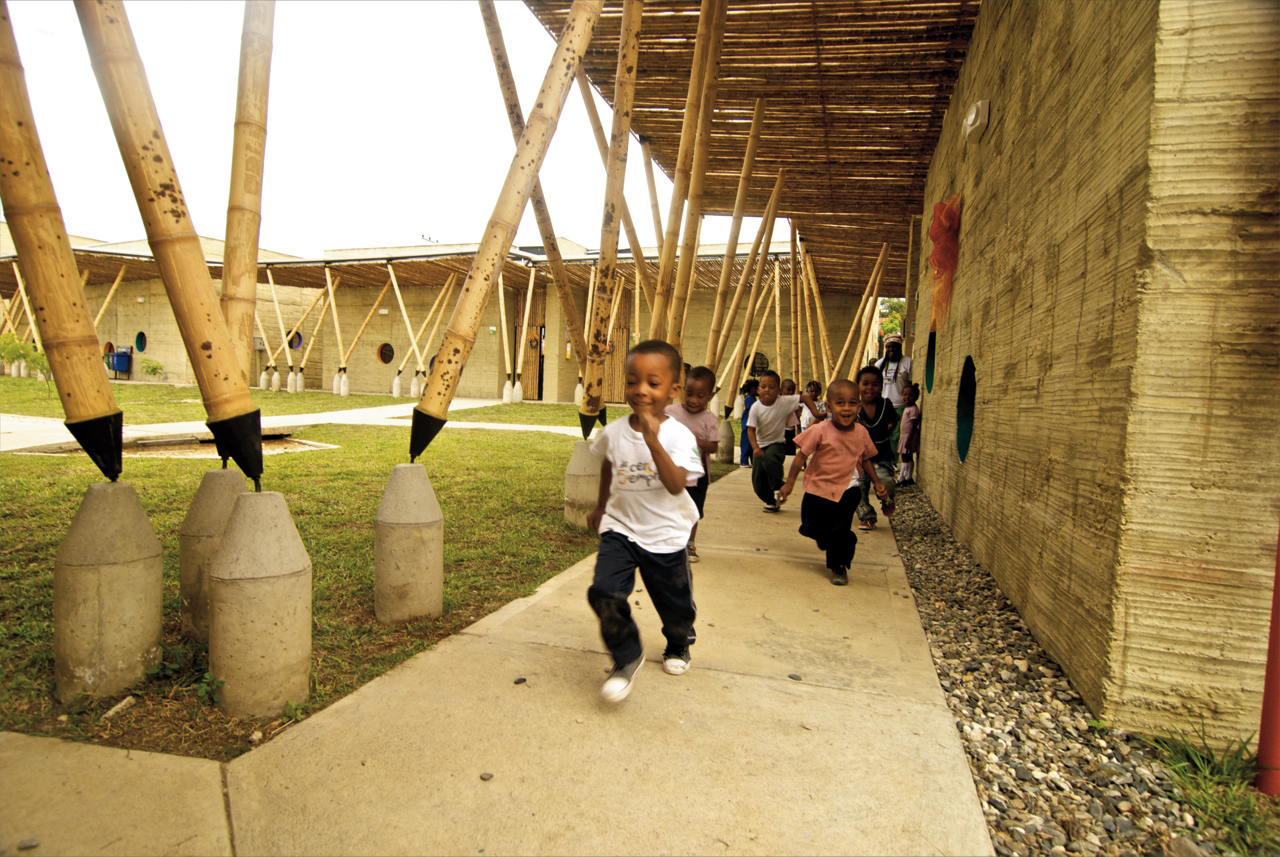
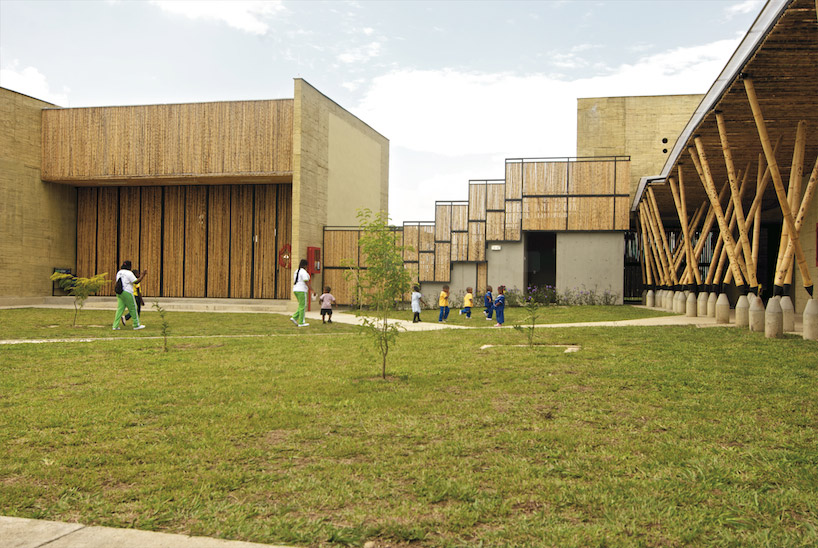
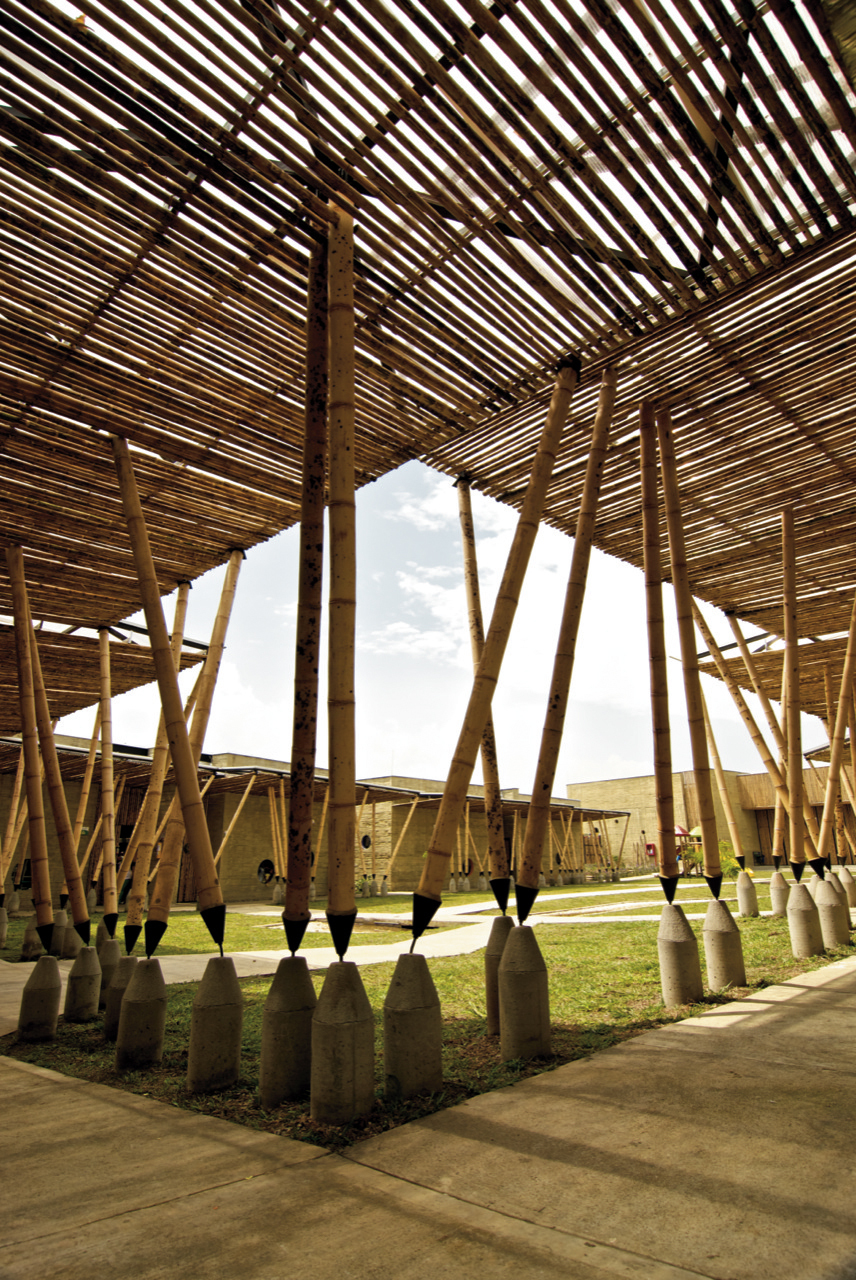
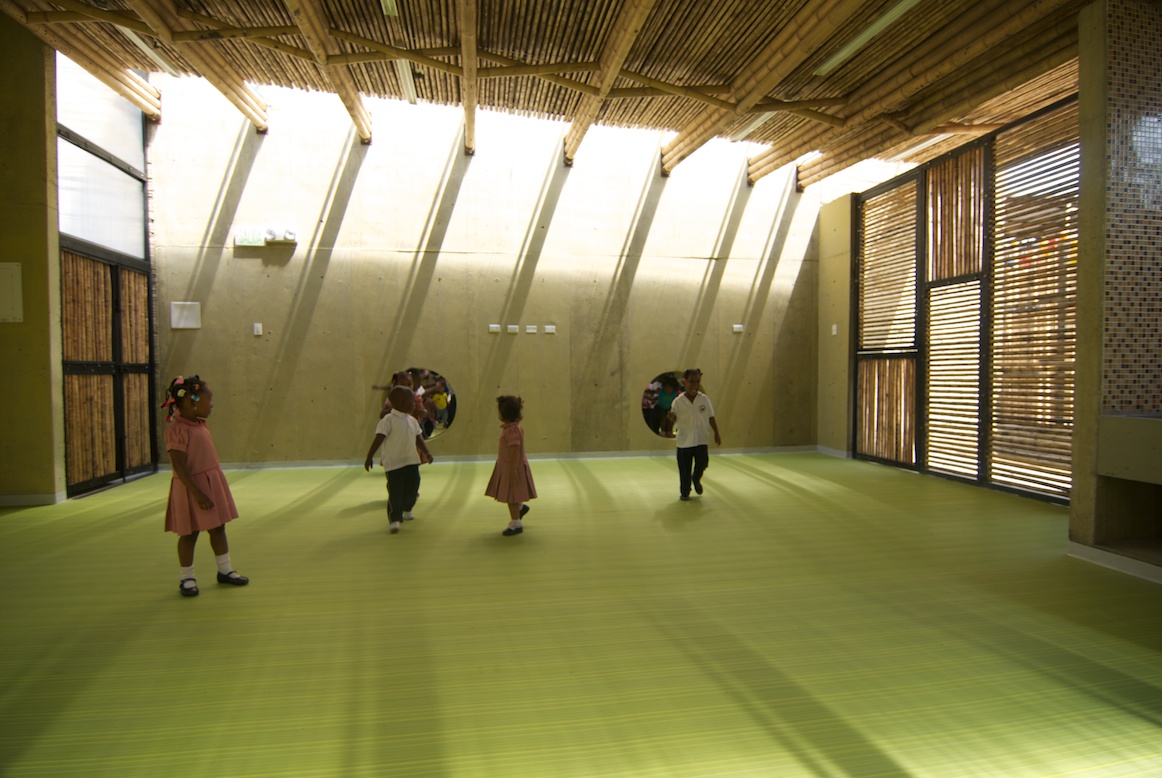



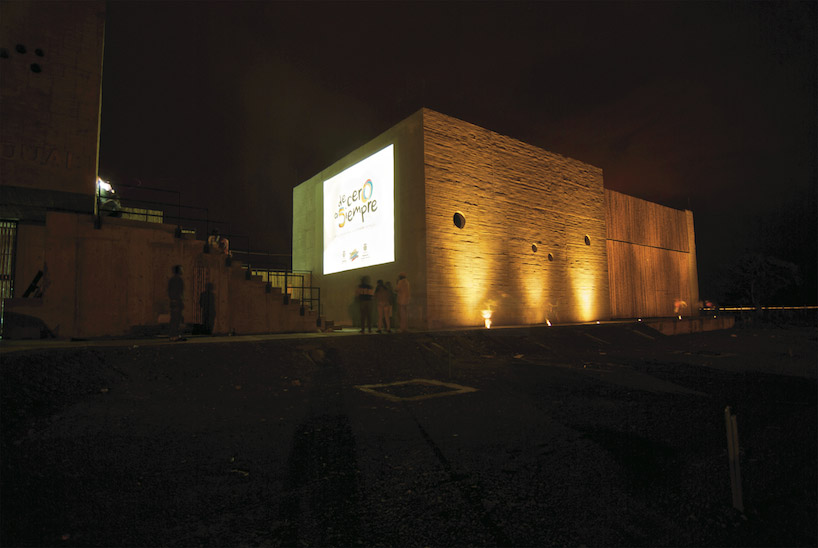

Thanks for sharing useful Information,Regards
ReplyDeleteRenewable Energy Company in Dubai
Thank you for sharing this useful information
ReplyDeleteRenewable Energy Company in UAE
Thanks for sharing this useful information.
ReplyDeleteAAKASH is a leading bamboo biomass renewable energy company in dubaiin producing bamboo and
creating sustainable & renewable energy from it While seeking and advocating renewable Energy in a cost effective manner.
Thank you for sharing the process of the building and principles behind the layout. My husband is about to make a community space and wondering how can people feel the ownership and, how i lt will make a succesful public space. Great article!
ReplyDeleteHey,
ReplyDeleteYour article is nice, I like it.
Thanks for sharing with us.
Eicher 241
Nice article, thank you for sharing useful information, also consult best Bamboo energy company in dubai
ReplyDelete